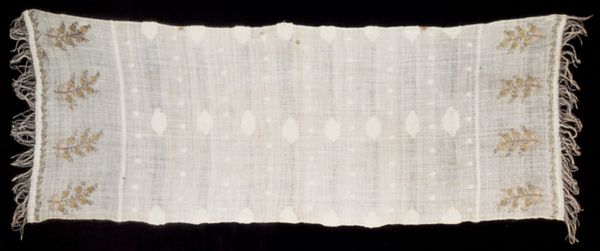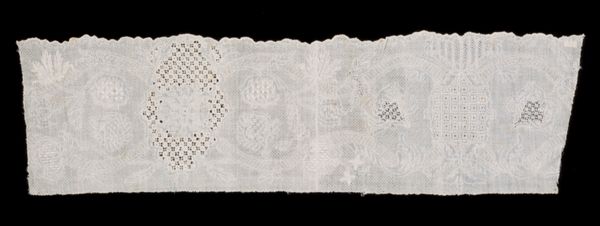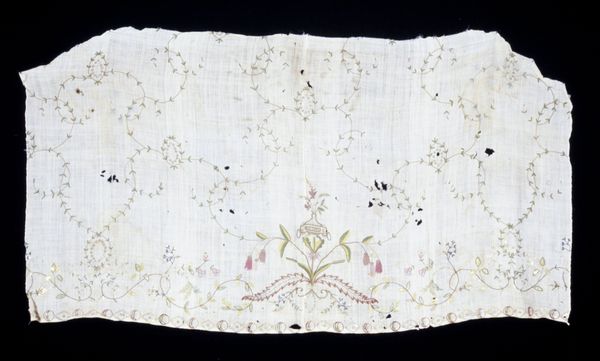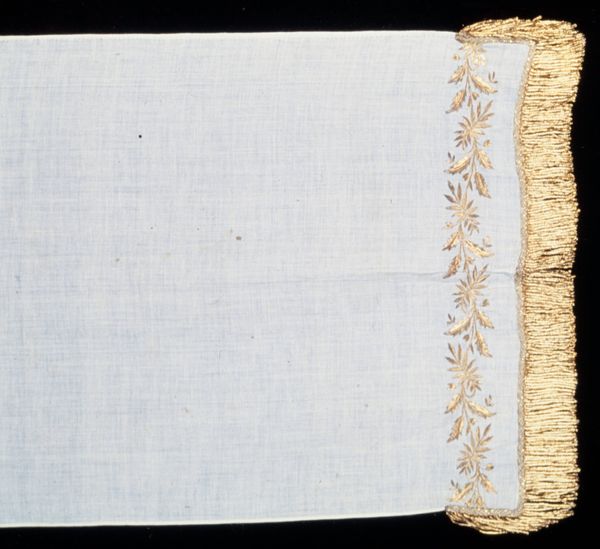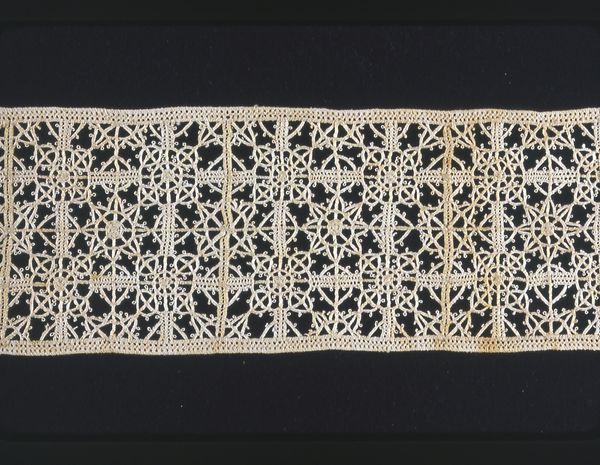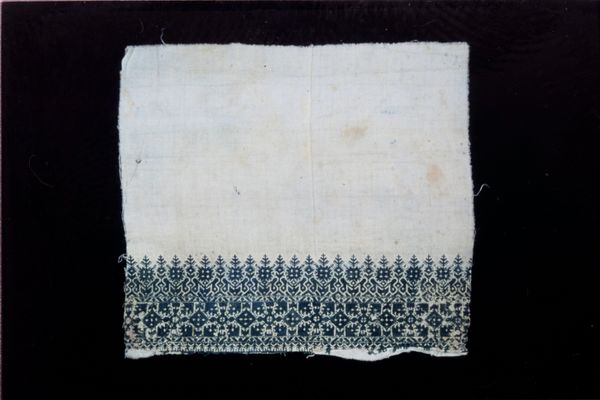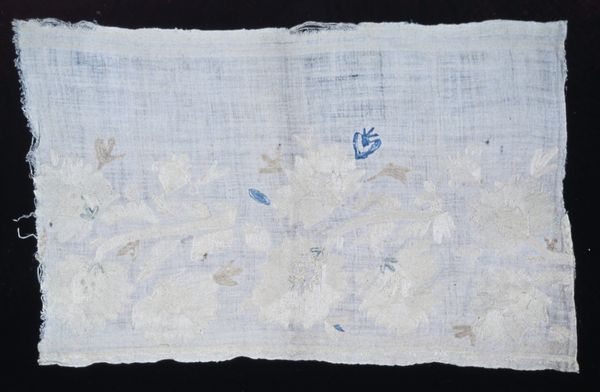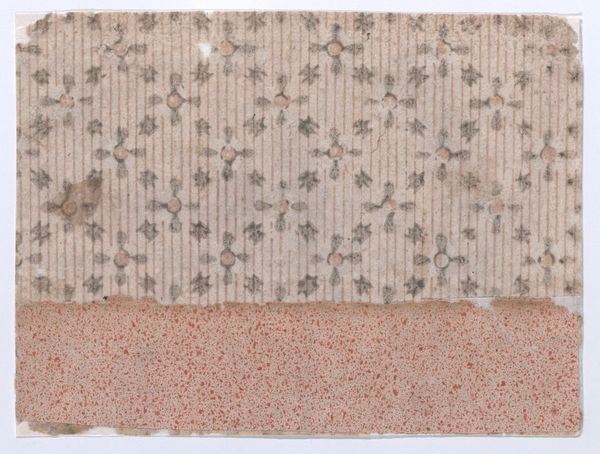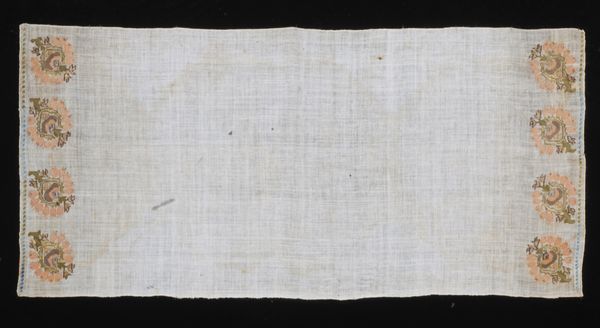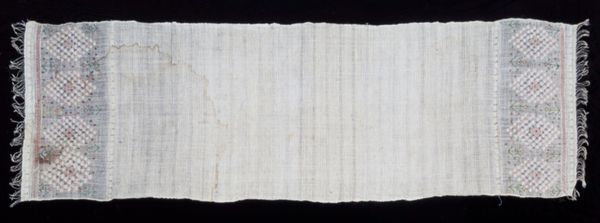
weaving, textile
#
weaving
#
textile
#
repetition of pattern
#
pattern repetition
#
decorative-art
Copyright: Public Domain
Curator: What a beautifully understated textile! This piece, known as "White Towel," dates from sometime in the 19th or early 20th century. It’s part of the decorative arts collection. The meticulous weaving shows the artist’s exquisite eye. Editor: I find it incredibly calming. The ivory tones and symmetrical patterns have a quiet elegance about them. It's quite modest overall. Curator: I appreciate your initial impression. Beyond its aesthetic qualities, I wonder what purpose it held. During this era, what was the role of women's domestic artistry in the private sphere? This towel represents an intersection of function, craftsmanship, and possibly female expression within prescribed boundaries. Editor: Certainly. Speaking strictly visually, the delicate, floral motifs arranged with such rigorous symmetry strike me as almost mathematical. It's this marriage of organic form and structured repetition that's so intriguing. Almost like a dance of chaos and order, no? Curator: The tension between order and the natural world is certainly palpable. Thinking about the societal implications, was creating such a decorative item an act of subtle defiance or self-expression, or simply an acceptance of domestic roles? The absence of a known maker only intensifies this question. Who spent hours crafting it? Under what circumstances? Editor: Without historical clues, the maker's intent stays beautifully ambiguous. We're left to focus solely on the object itself—the rhythm of the weaving, the considered spacing. Perhaps it's the sheer constraint that lends the piece such powerful visual interest, with a rigid frame filled with beautiful decorative lines and figures. Curator: I'm left thinking about how seemingly ordinary objects can carry significant meaning. This simple towel provides a potent window into women's lives, labor, and potential creative agency during a period marked by great gender disparity. Editor: And, perhaps, how enduring beauty can be found even within rigid confines. An artwork can transcend a utilitarian object—transforming domesticity into quiet yet lasting artwork.
Comments
No comments
Be the first to comment and join the conversation on the ultimate creative platform.

